How We Develop Phragmipedium At OrchidWeb
Posted by Jason Fischer on Apr 18th 2019
I thought I'd give people a look into how orchids are created from making the hybrid to flowering the plant. Orchids take time and patience, and each step is critical to ensuring a healthy and happy plant. I chose using a Phragmipedium as the subject for the example as it is one of my favorite genera of orchids, and a variety that not too many are breeding with as they are not a mass market plant.
This blog will help to explain and overview the YouTube video we made explaining the process. Please watch the video for a more detailed explanation!
Watch the Video:
Step 1: Pollination
The easiest way is to use a toothpick to remove the pollen from one flower (there is typically one piece on each side of the column) and place it on the stigmatic surface of another (or onto itself if you are self-pollinating). The stigma is where the pollen will pull through into the back of the flower which is held onto the spike via the ovary. If fertilization takes place, the ovary will swell and you will have a seedpod.
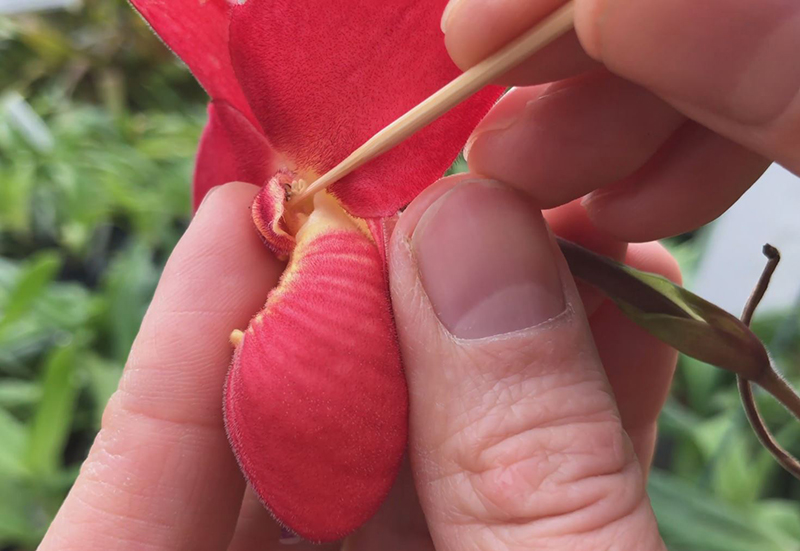
Step 2: The Seedpod
A successfully pollinated flower will develop a seedpod which has various harvesting times. Typically this can range from 2 to 12 months, depending on genera. Phragmipedium develop faster if the weather is warmer. Some are ripe in just shy of 2 months during the warmest seasons, while in the winter they typically need 10 to 12 weeks. There is the exception of the long-petaled phrags (the caudatum complex) that take about 12 months to ripen.
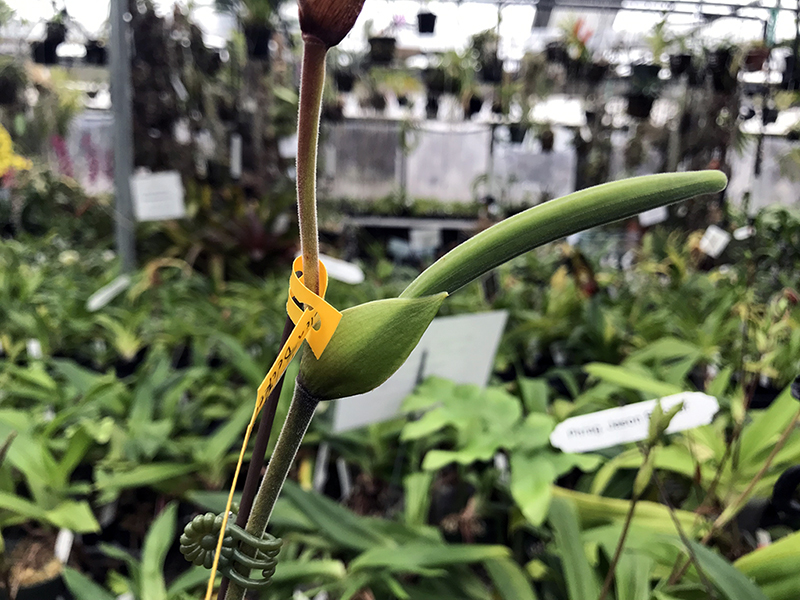
Step 3: Sowing The Seed
If you harvest before the seedpod bursts, you sterilize the outside of the seedpod using a light bleach solution (typically 5%), rinse in sterile water, and then cut with a knife or scalpel under the laminar flow hood (this creates a sterile environment for the seed to be sown onto the agar gel media). The agar gel holds all the nutrients necessary for germination, with different formulas used for different genera and stages of plant development.
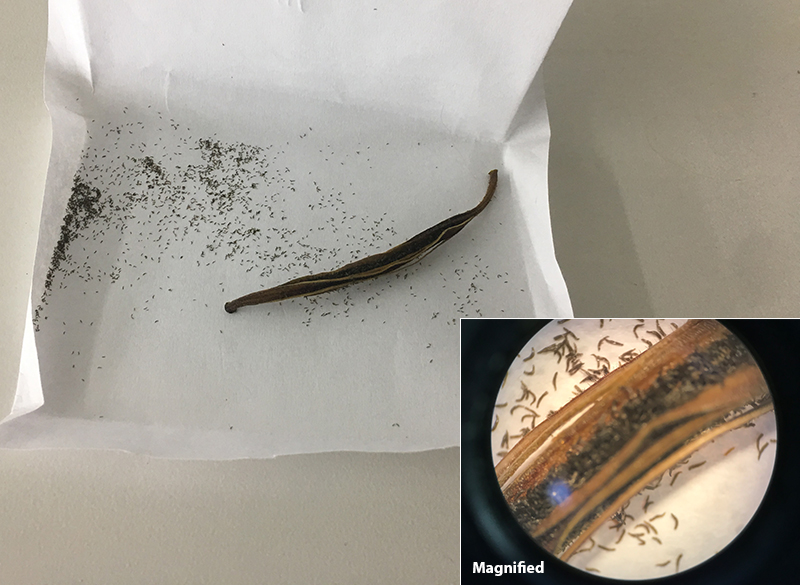
Step 4: Replating
The seedlings must be spread out onto new flasks two to three times during their in-vitro stage. We usually finish off in the final flask with a count of 25 to 50 seedlings as they can grow better roots and leaves in smaller numbers (hundreds will germinate on a good seed sowing). The entire process from sowing seed to deflasking is about 1 1/2 to 2 1/2 years, depending on genera.
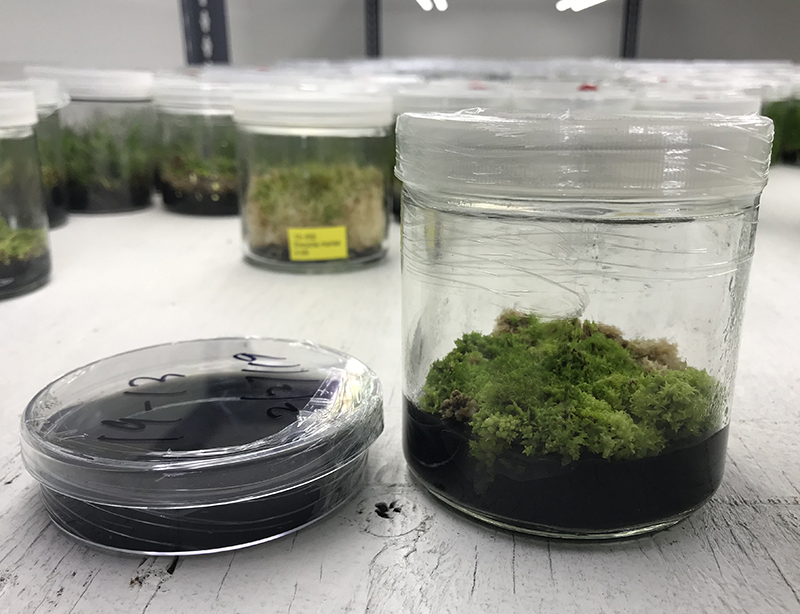
Step 5: Deflasking
This is when the orchid seedlings are ready to be planted into community pots or flats. We rinse off the agar gel from the roots and separate the seedlings, then line them up in rows using the proper potting media which is typically a fine/small bark mixture. In some cases when the root systems are very difficult to separate, we will just pot the seedlings as is, crammed tight next to each other, and separate a year later when they have outgrown the community pot.
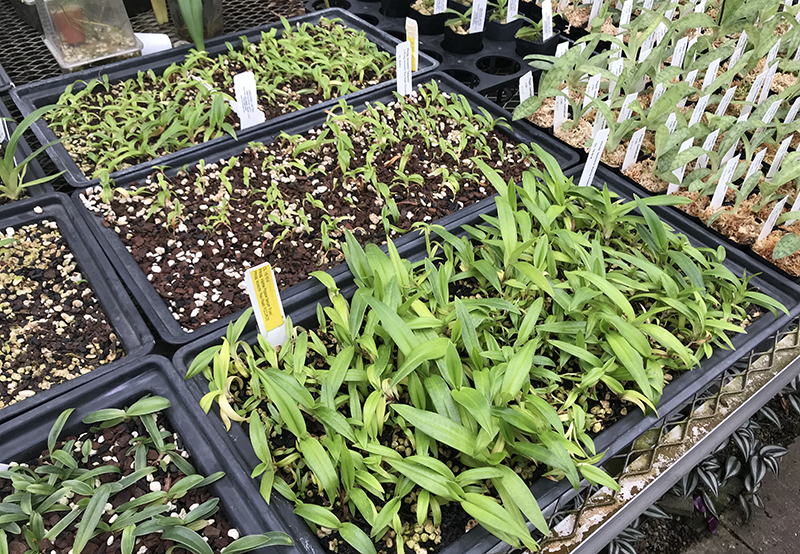
Step 6: Potting
After about one year, most orchid seedlings are ready to move from the community pot to individual pots. Often the first pot is a 2 to 2.25" plastic pot, which the seedlings will spend another 1 to 2 years in. Some miniatures may flower in this size container, others may need to make it up to a 5" pot prior to reaching flowering size. The entire process for an orchid to flower from making the seedpod is typically 5 to 7 years, with the exception of some types that can do it faster... and in some cases, slower with a 10 year wait!

In Conclusion:
There are two major benefits in this process. First, it gives us the opportunity to breed species with each other, of which many are almost or have gone extinct in the wild. It preserves them and gives others the opportunity to grow them. Secondly, new hybrids allow creativity and exclusivity, with the added bonus of being able to name the new hybrid. Sometimes I get creative with names, sometimes I name them after people, and sometimes we sell the registration rights as naming an orchid yourself can make for a special gift/opportunity that is indefinite since once an orchid hybrid is registered, it will always retain the registration name even if someone else re-creates the cross.
Hopefully this outline will help you understand the delicate process involved in making orchid seeds, and help you appreciate how much work it actually takes to produce new orchids! We enjoy the work, and as a breeder I can say it is best to make new crosses every year so you have some things to look forward to while waiting for other crosses to grow up and flower!
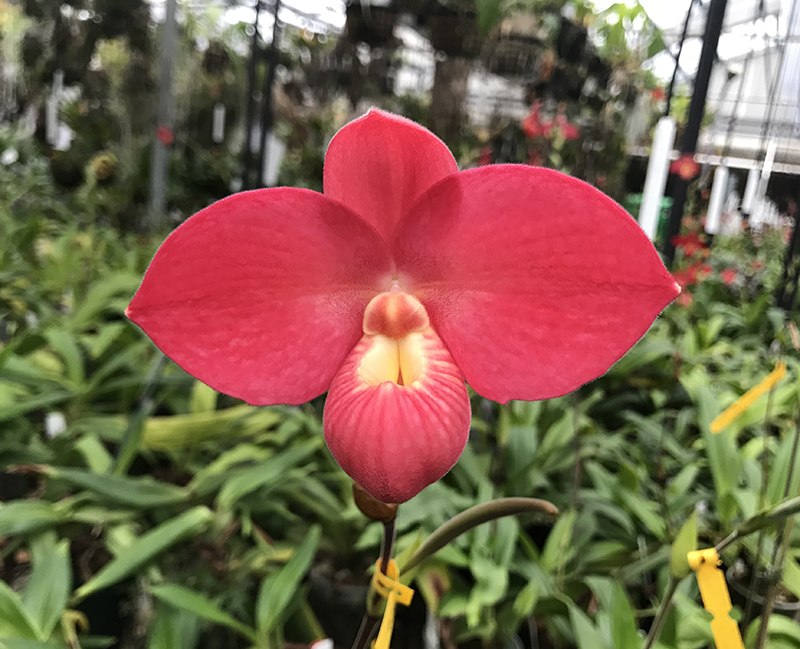
Feel free to look at our Phragmipedium category if this type of orchid interests you, or check out our In-Spike section to see what is current!
Best regards,
Jason Fischer

